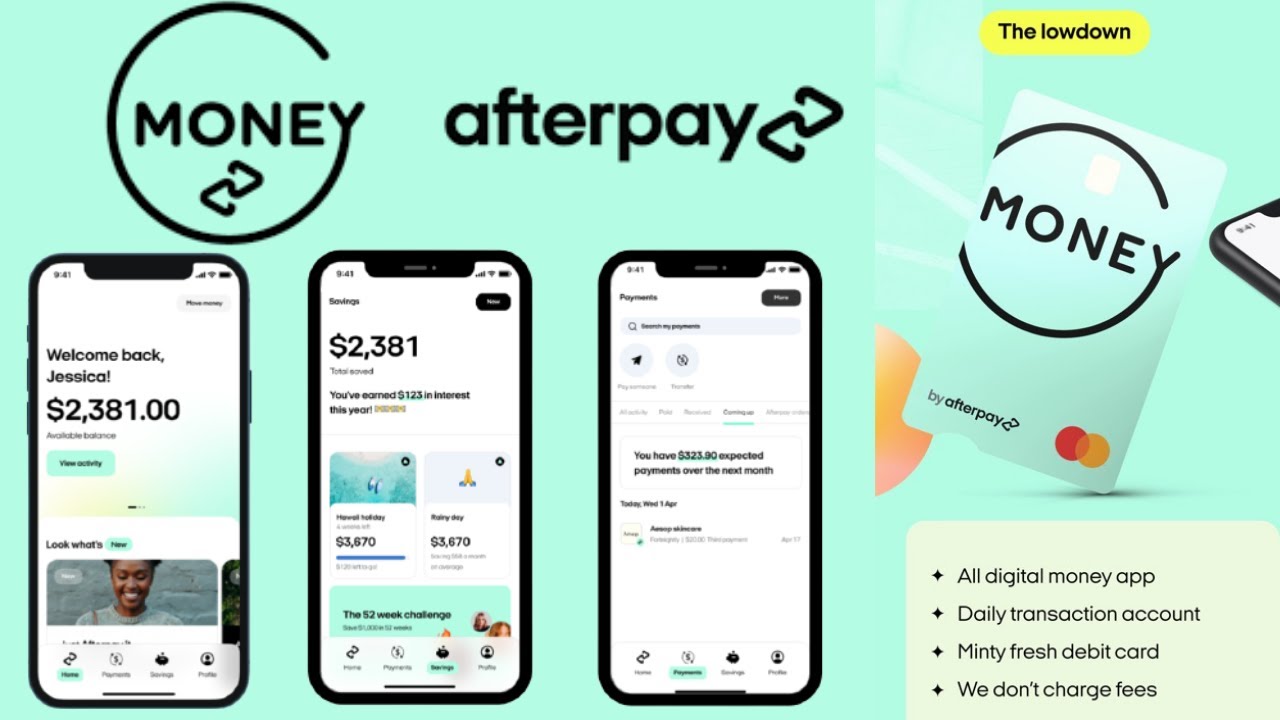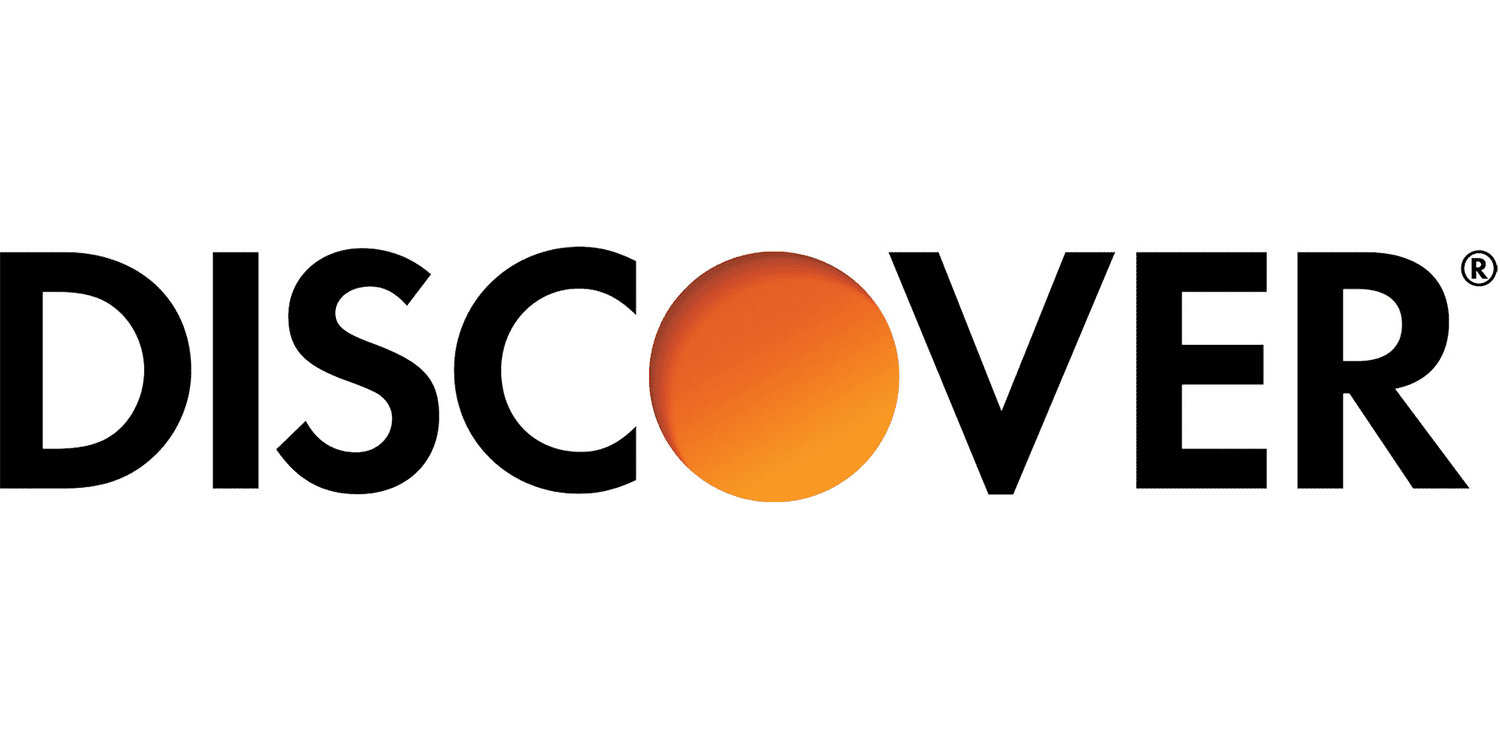Introduction
Welcome to the world of Afterpay, the innovative buy-now-pay-later platform that has taken the retail world by storm. In this article, we will delve into the fascinating journey of Afterpay, tracing its humble beginnings to its acquisition by Square Inc., and uncovering the impact it has had on the world of e-commerce.
Afterpay has revolutionized the way people make purchases, offering a convenient and flexible payment solution that defies traditional credit systems. With Afterpay, shoppers can buy products upfront and pay for them in manageable installments, without any interest or hidden fees. This financial freedom has resonated with consumers worldwide, propelling Afterpay to incredible success.
As we explore the story of Afterpay, we will navigate through its pivotal milestones, including its merger with Touchcorp, its global expansion, and its acquisition by Square Inc. We will also look at Afterpay’s position in the ever-evolving buy-now-pay-later landscape, examining its competitors in the market.
So, whether you’re an avid Afterpay user, a curious consumer, or a business owner looking to understand the changing retail landscape, sit back and join us on this exciting journey through the world of Afterpay.
Afterpay: A Brief Overview
Afterpay, founded in 2014 by Nick Molnar and Anthony Eisen, is an Australian fintech company that has reshaped the way consumers approach shopping and payments. It offers a unique buy-now-pay-later service that allows customers to make purchases and pay for them in four equal installments over a short period of time.
Unlike traditional credit systems, Afterpay does not charge interest or fees when payments are made on time. This transparent and customer-friendly approach has gained immense popularity, making Afterpay a household name in the retail industry.
The concept behind Afterpay is to provide a flexible and accessible payment solution for consumers, especially millennials and Gen Z who prefer alternatives to traditional credit cards. With Afterpay, customers can split their purchase amount into four equal installments, paid every two weeks. This installment model empowers shoppers to budget their expenses effectively and avoid accumulating debt.
Afterpay’s business model is built upon partnerships with retailers, both online and offline. By integrating Afterpay into their payments infrastructure, merchants can offer this payment option to their customers, attracting a larger audience and boosting sales. From fashion and beauty to electronics and homeware, Afterpay has a wide range of retail partners across various industries.
One of the key features of Afterpay is its instant approval process. Consumers can sign up for Afterpay and get approved within minutes, allowing them to start using the service for their purchases immediately. This seamless experience, combined with its user-friendly interface and clear payment terms, has contributed to the rapid adoption of Afterpay by millions of users worldwide.
Moreover, Afterpay provides a convenient mobile app that enables users to manage their payments, view upcoming installments, and keep track of their spending. This app-centric approach aligns with the preferences of the digital-savvy generation, who value convenience and accessibility on mobile devices.
As Afterpay gained traction in Australia, it expanded its services to other markets, including the United States, the United Kingdom, New Zealand, and Canada. This global expansion propelled Afterpay to new heights, attracting a substantial user base and establishing its presence as a leading player in the buy-now-pay-later industry.
The Early Days of Afterpay
The story of Afterpay begins in 2014 when founders Nick Molnar and Anthony Eisen recognized a gap in the market for a payment solution that catered to the needs of millennials and the digitally-driven consumer base. They envisioned a way to make shopping more accessible and affordable without the reliance on traditional credit cards.
In its early days, Afterpay faced skepticism and challenges as it sought to disrupt the established financial landscape. However, Molnar and Eisen were determined to make their vision a reality. They believed that by offering a transparent and interest-free payment option, they could win over consumers who were looking for an alternative to traditional credit.
To bring their idea to life, Molnar and Eisen secured funding and worked tirelessly to develop the Afterpay platform. They aimed to create a user-centric experience, making it easy for shoppers to split their payments into manageable installments with no interest or fees.
Afterpay’s launch in 2015 marked the beginning of a new era in the retail industry. It quickly gained traction among consumers who valued the flexibility and control it offered. This early success highlighted the widespread demand for alternative payment options, especially among younger generations.
Through strategic partnerships with retailers, Afterpay expanded its presence in Australia, forging relationships with both online and brick-and-mortar stores. This allowed consumers to use Afterpay for a wide range of products, from fashion and accessories to electronics and home goods.
The early success of Afterpay in Australia laid the foundation for further expansion. With positive feedback and increasing consumer adoption, the company set its sights on international markets. In 2017, Afterpay launched in the United States, followed by the United Kingdom, New Zealand, and Canada.
During its early days, Afterpay also faced some criticism and regulatory challenges. There were concerns raised about its impact on consumer credit behavior and the potential for overspending. However, Afterpay addressed these concerns by implementing responsible lending practices, including credit checks and spending limits based on individual affordability.
Despite the initial obstacles, Afterpay’s innovative payment model started to gain recognition and support from consumers, retailers, and investors alike. The company’s dedication to transparency, customer convenience, and driving positive financial behavior set it apart from traditional credit providers.
The early days of Afterpay laid the groundwork for its subsequent growth and success. By creating a payment solution that resonated with the needs and preferences of modern consumers, Afterpay revolutionized the retail industry and paved the way for the rise of the buy-now-pay-later sector globally.
The Rapid Rise of Afterpay
Afterpay’s innovative approach to payments quickly gained traction, leading to a rapid rise in popularity and widespread adoption. The company’s ability to tap into the growing demand for flexible and interest-free payment options propelled its success and solidified its position as a leader in the buy-now-pay-later market.
One of the key factors contributing to Afterpay’s rapid rise was its strategic partnerships with retailers. By collaborating with well-known brands and online sellers, Afterpay was able to reach a wider audience and offer its convenient payment solution across a variety of industries. This accessibility and availability of Afterpay at popular retailers further enhanced its appeal to consumers.
The increasing number of Afterpay users drove a powerful network effect, with satisfied customers spreading the word and recommending the service to their friends and family. This organic growth, fueled by positive word-of-mouth, played a significant role in Afterpay’s swift rise to prominence.
In addition to its partnerships and user growth, Afterpay benefited from its ability to adapt to changing consumer behavior and preferences. The rise of e-commerce and the shift towards mobile shopping presented a valuable opportunity for Afterpay. The company capitalized on these trends by providing a seamless and user-friendly mobile app, allowing customers to conveniently manage their payments and make purchases on the go.
Furthermore, Afterpay’s commitment to transparency and responsible lending resonated with consumers who were seeking alternatives to high-interest credit cards. By eliminating interest fees and providing clear repayment terms, Afterpay garnered trust and loyalty from its user base. This customer-centric approach set it apart from traditional financial institutions and helped solidify its position as a trusted and preferred payment provider.
As Afterpay continued to grow, it attracted the attention of investors. The company’s successful IPO in 2016 marked a significant milestone in its journey, as it secured additional funding for expansion and further development of its platform. With increased financial backing, Afterpay was able to execute its expansion plans at an accelerated pace, fueling its rapid rise in both domestic and international markets.
The rapid rise of Afterpay also sparked interest from larger players in the financial industry. This led to the acquisition of a majority stake in Afterpay by Touchcorp in 2017, forming a strong partnership that would further propel its growth. This merger provided Afterpay with enhanced resources, expertise, and access to a broader network, enabling it to continue its upward trajectory.
Overall, Afterpay’s rapid rise can be attributed to its ability to identify and address a gap in the market, its strategic partnerships, user-centric approach, and the changing preferences of modern consumers. By offering a convenient and transparent payment solution, Afterpay has reshaped the way people shop and paved the way for the widespread adoption of the buy-now-pay-later model.
The Merger with Touchcorp
In 2017, Afterpay’s rapid growth attracted the attention of Touchcorp, a leading Australian payment services provider. Recognizing the potential of Afterpay’s innovative payment solution, Touchcorp saw an opportunity to strengthen its position in the market and expand its offerings by joining forces with Afterpay.
The merger between Afterpay and Touchcorp created a formidable partnership that would leverage the strengths of both companies. Touchcorp brought extensive experience in payment processing and infrastructure, while Afterpay brought its unique buy-now-pay-later platform and rapidly growing customer base.
With the merger, Afterpay gained access to Touchcorp’s robust technology platform and infrastructure, allowing it to scale its operations and handle the increasing transaction volumes as its user base continued to grow. This partnership also provided Afterpay with the expertise and resources needed to enhance its services and optimize the overall customer experience.
The merger with Touchcorp also resulted in Afterpay gaining access to a wider network of merchants. Through Touchcorp’s existing relationships with retailers, Afterpay was able to expand its acceptance across various industries and increase its market presence.
Additionally, the merger facilitated the integration of Afterpay into existing payment systems, making it easier for merchants to offer Afterpay as a payment option to their customers. This integration further strengthened Afterpay’s positioning as a seamless and user-friendly payment solution for businesses, encouraging greater adoption by retailers who valued the opportunity to attract and retain customers.
Not only did the merger with Touchcorp enhance Afterpay’s capabilities and market reach, but it also signaled a shift in the perception of buy-now-pay-later services. This partnership demonstrated that Afterpay’s model had significant potential and could be a viable alternative to traditional payment methods.
Following the merger, Afterpay went on to achieve even greater success, expanding its operations globally and cementing its position as a leading player in the buy-now-pay-later industry. The merger with Touchcorp served as a catalyst for Afterpay’s growth and solidified its reputation as an innovative and disruptive force in the financial technology sector.
Overall, the merger between Afterpay and Touchcorp marked a significant milestone in Afterpay’s journey. It provided Afterpay with the necessary resources, expertise, and market access to continue its upward trajectory and establish itself as a dominant player in the payment industry.
Afterpay’s Global Expansion
After solidifying its position in the Australian market, Afterpay set its sights on expanding its services internationally. The company recognized the global demand for flexible payment solutions and aimed to capitalize on the growing popularity of the buy-now-pay-later model.
In 2017, Afterpay made its first move into international markets by launching in the United States. This marked a significant milestone for the company, as the US represented a massive e-commerce market with enormous growth potential. By entering the US market, Afterpay aimed to replicate its success and capture the attention of American consumers.
The launch in the United States proved to be a game-changer for Afterpay, contributing to its skyrocketing growth. American consumers quickly embraced Afterpay as an alternative payment option, attracted by its interest-free installment plan and the convenience it offered. This successful expansion into the US market paved the way for Afterpay’s global dominance.
Building on its success in the United States, Afterpay pursued further international expansion. It entered the United Kingdom in 2018, followed by New Zealand and Canada in the same year. By expanding into these markets, Afterpay strengthened its global presence and established itself as a leading buy-now-pay-later service provider.
Afterpay’s global expansion was driven by strategic partnerships with local retailers in each market. By collaborating with prominent brands and online merchants, Afterpay ensured its availability and acceptance across a diverse range of industries. This approach allowed Afterpay to tap into different customer segments and attract a wider audience.
As Afterpay expanded into new territories, it also focused on adapting its services to suit local preferences and regulations. By understanding the unique nuances of each market, Afterpay tailored its offering to meet the specific needs and demands of consumers, ultimately driving greater adoption and engagement.
Furthermore, Afterpay’s approach to international expansion was characterized by its commitment to responsible lending practices. The company implemented credit checks and spending limits based on individual affordability, ensuring that customers were not taking on more debt than they could handle. This approach helped build trust and promote responsible financial behavior in each market.
Afterpay’s global expansion was met with phenomenal success, as it attracted millions of users worldwide and generated substantial revenue growth. The company’s ability to adapt its services to different markets, its focus on strategic partnerships, and its commitment to responsible lending have all been instrumental in its international triumph.
Today, Afterpay continues to expand its global footprint, exploring opportunities in new markets and relentlessly innovating to meet the evolving needs of consumers and merchants worldwide. Its global expansion journey has transformed Afterpay into a household name and solidified its position as a dominant player in the buy-now-pay-later industry.
The Acquisition by Square Inc.
In August 2020, Afterpay made headlines once again when it announced its acquisition by Square Inc., a global leader in the fintech industry. This acquisition marked a major milestone for Afterpay and demonstrated the significant impact and potential of the buy-now-pay-later market.
Square Inc.’s acquisition of Afterpay was a testament to the company’s remarkable growth and success. Square, led by CEO Jack Dorsey, recognized the value and potential of incorporating Afterpay’s services into its broader financial ecosystem. It saw Afterpay as a strategic addition that would complement its existing suite of financial solutions.
The acquisition provided Afterpay with access to the vast resources, expertise, and network of Square Inc. By joining forces with Square, Afterpay gained a powerful ally that could support its continued expansion and accelerate its growth trajectory.
This acquisition also brought together two companies with a shared vision of empowering small businesses and providing accessible financial services to consumers. Square’s commitment to democratizing financial services aligned seamlessly with Afterpay’s mission to give consumers control over their spending and budgeting.
Moreover, Square’s extensive customer base and merchant network provided Afterpay with a broader market reach. This integration allowed Afterpay to offer its services to a wider audience of merchants and consumers, further solidifying its position as a global leader in the buy-now-pay-later industry.
Additionally, the acquisition opened doors for future collaboration and innovation between Afterpay and Square. The combined expertise and innovation capabilities of both companies could lead to the development of new and enhanced financial solutions that cater to the changing needs of consumers and merchants.
Interestingly, the acquisition also highlighted the growing interest and recognition of the buy-now-pay-later model by established financial institutions. Square’s move to acquire Afterpay demonstrated its confidence in Afterpay’s business model and the potential of the buy-now-pay-later sector as a whole.
The acquisition by Square Inc. propelled Afterpay into a new phase of growth and strengthened its position in the industry. It not only provided Afterpay with the resources and support needed for its continued success but also validated the significance of the buy-now-pay-later market in transforming the future of consumer finance.
Going forward, the acquisition by Square Inc. positions Afterpay as a key player in Square’s suite of financial services, heralding a new chapter of innovation and collaboration that has the potential to redefine the way consumers and merchants engage with the financial ecosystem.
Afterpay and the Evolution of Buy-Now-Pay-Later
Afterpay has played a pivotal role in the evolution of the buy-now-pay-later (BNPL) industry, revolutionizing the way consumers approach shopping and payments. As a pioneer in the space, Afterpay has not only transformed the retail landscape but also influenced the development and adoption of BNPL services worldwide.
Before Afterpay introduced its innovative model, traditional credit cards were the primary means of making purchases on credit. However, the buy-now-pay-later phenomenon, spearheaded by Afterpay, offered an alternative that resonated with modern consumers, particularly younger generations.
Afterpay’s success can be attributed to its emphasis on transparency, convenience, and interest-free payments. By eliminating interest and providing clear repayment terms, Afterpay made it more appealing for consumers to manage their purchases and avoid falling into a cycle of debt.
Furthermore, Afterpay’s installment-based payment system reflects the changing financial habits and preferences of consumers. Millennial and Gen Z shoppers, who are wary of high-interest credit obligations and prefer flexibility, have embraced the buy-now-pay-later concept championed by Afterpay.
Afterpay’s success and the subsequent growth of the industry have sparked increased competition and innovation in the BNPL market. Numerous companies have emerged, offering similar payment solutions, each with their own unique features and positioning.
As the industry evolves, key players like Afterpay have expanded their offerings beyond installment payments. Many now offer additional features, such as rewards programs, budgeting tools, and personalized shopping experiences. These advancements cater to the evolving needs and expectations of the modern consumer.
The rise of buy-now-pay-later services has also prompted established financial institutions to take notice and introduce their own offerings. Banks and credit card companies have recognized the potential of incorporating flexible payment solutions to meet the demands of their customers.
Moreover, regulatory bodies and governments have become increasingly involved in monitoring and shaping the BNPL landscape. They aim to strike a balance between fostering innovation and protecting consumer interests, ensuring responsible lending practices and consumer rights.
Afterpay’s success has influenced consumer behavior beyond the realm of finance and retail. It has shaped expectations surrounding convenience, transparency, and personalized experiences. Consumers now anticipate seamless and hassle-free payment options that align with their financial preferences.
Overall, Afterpay’s pioneering role in the evolution of BNPL services has transformed the way people approach shopping and payments. Its user-friendly and customer-centric approach, combined with a conscious effort to promote responsible financial behavior, has laid the foundation for a thriving and dynamic buy-now-pay-later industry.
Afterpay’s Competitors in the Market
In the fast-growing buy-now-pay-later (BNPL) industry, Afterpay faces competition from several players vying for a share of the market. As the popularity of BNPL services continues to rise, these competitors present alternative options for consumers looking for flexible payment solutions.
One of the key competitors in the space is Klarna, a Swedish BNPL platform that offers similar services to Afterpay. Klarna operates in multiple countries and has gained significant traction with its customer-friendly approach and partnerships with various retailers.
Another prominent competitor is PayPal’s Pay in 4, which allows consumers to split purchases into four interest-free payments. With PayPal’s wide acceptance and extensive user base, Pay in 4 competes with Afterpay by offering a familiar and trusted payment option for shoppers.
Affirm, founded by PayPal co-founder Max Levchin, is also a well-known player in the BNPL market. Affirm distinguishes itself by providing customers with the option to finance larger purchases and pay in installments over a specified period with or without interest, depending on the retailer’s terms.
Sezzle is another notable competitor, primarily focused on the North American market. Like Afterpay, Sezzle allows customers to split their purchases into four interest-free installments. However, Sezzle sets itself apart with its heavy emphasis on financial empowerment and building customer credit through responsible spending.
Quadpay, acquired by Zip Co in 2020, is gaining traction among US consumers by offering interest-free installments and a seamless checkout experience. Quadpay differentiates itself by providing instant approval and the ability to use the installment option both online and offline.
While Afterpay has established a strong presence in the Australian and US markets, its competitors continue to emerge and expand globally. These competitors aim to capture market share by differentiating themselves through unique features, partnerships, and pricing strategies.
Despite the intensifying competition, Afterpay maintains a competitive edge through its extensive retail partnerships and a large and loyal customer base. Its brand recognition, user-friendly platform, and focus on responsible lending practices have solidified its position as a leader in the BNPL industry.
As the BNPL market evolves, it is likely that new challengers will continue to emerge, making it crucial for Afterpay to innovate and adapt. Whether through new features, enhanced customer experiences, or entering new markets, Afterpay and its competitors will shape the future of consumer payment options and continue to redefine the way people shop and pay for their purchases.
Conclusion
The journey of Afterpay, from its humble beginnings to its position as a global leader in the buy-now-pay-later industry, highlights the transformative power of innovative financial solutions. Afterpay has reshaped the retail landscape by offering consumers a flexible and transparent payment option that caters to their changing preferences and needs.
Through strategic partnerships, a user-centric approach, and a commitment to responsible lending, Afterpay has gained immense popularity and trust among consumers worldwide. Its rapid rise and global expansion have paved the way for the widespread adoption of the buy-now-pay-later model, revolutionizing the way people shop and make payments.
Afterpay’s success has also fostered competition in the market, with other players entering the BNPL space to capture a share of the growing market. This competition has driven further innovation, benefiting consumers with more options and improved services.
As Afterpay continues its journey with the support of Square Inc., there is immense potential for collaboration and the development of new and enhanced financial solutions. The acquisition by Square Inc. reflects the growing recognition of the value and potential of the BNPL industry by established financial institutions.
Looking ahead, Afterpay and its competitors will shape the future of consumer finance, driving further advancements and opportunities in the payment industry. The evolution of BNPL services will continue to be driven by consumer demands for flexibility, convenience, and responsible financial practices.
As consumers and businesses embrace the benefits of buy-now-pay-later services, it is clear that Afterpay has played a pivotal role in transforming the way people approach shopping and payments. The journey of Afterpay serves as a testament to the power of innovation and the potential to disrupt traditional financial systems.
With its customer-centric approach, commitment to responsible lending, and a strong global presence, Afterpay is poised to continue leading the charge in shaping the future of the buy-now-pay-later industry. As consumers seek greater financial flexibility and convenience, Afterpay and its competitors will continue to refine and expand their offerings, empowering individuals to take control of their finances and enjoy a seamless shopping experience.

























